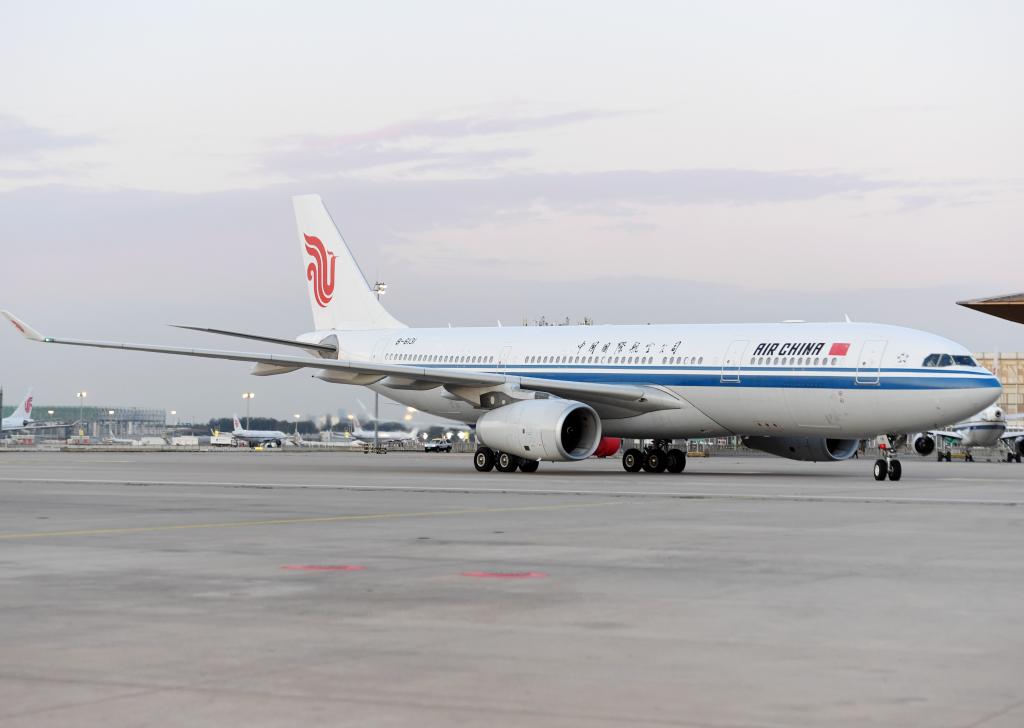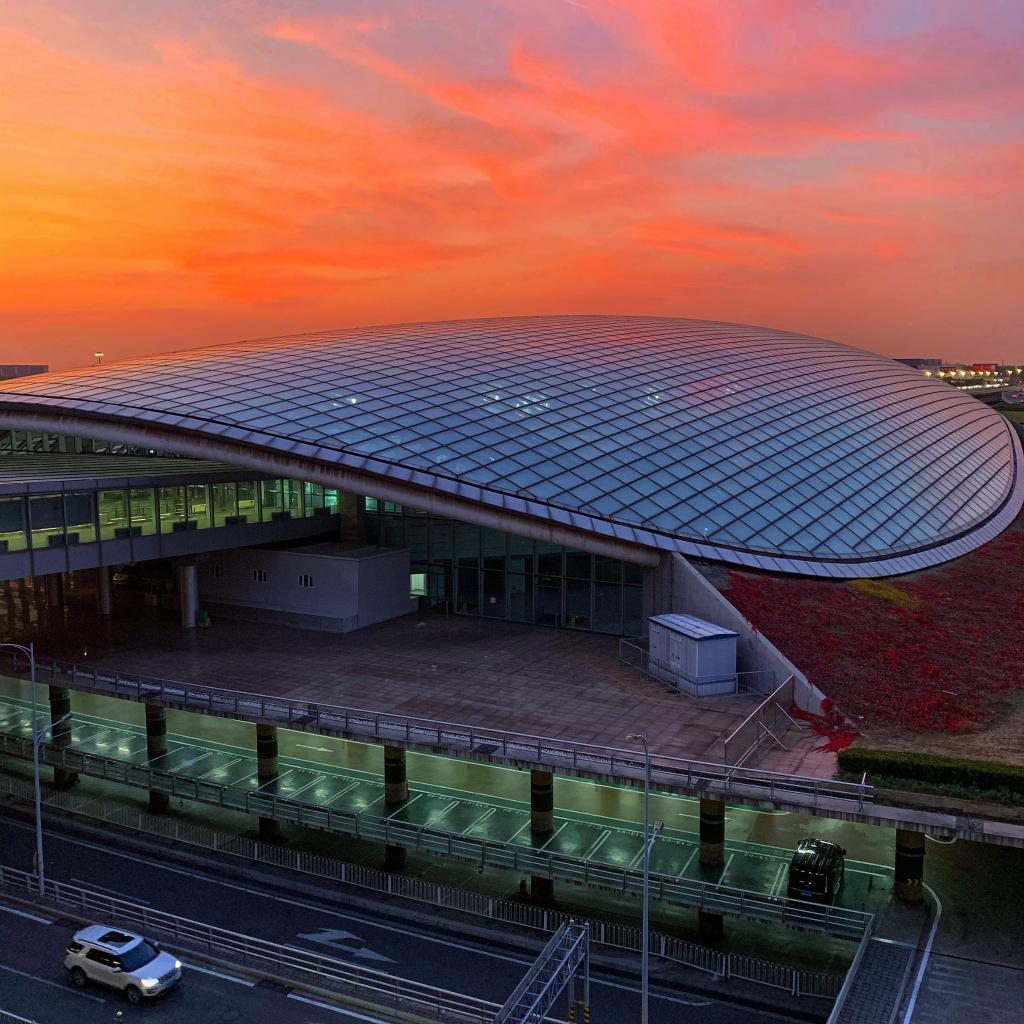
The plane carrying the Chinese delegation taxies as the Beijing 2022 Olympic flame arrived at Capital International Airport in Beijing, capital of China, Oct. 20, 2021. (Xinhua/Zhang Chenlin)
by Xinhua writer Hu Tao
BEIJING, Feb. 11 (Xinhua) -- It is often easy to get lost in a huge airport, but smart tech can bring convenience by providing real-time guidance to the appropriate boarding gate.
Beijing Capital International Airport (BCIA), an aviation hub in the Chinese capital, aims to offer a comfortable and efficient travel experience using such integrated smart technologies -- all passengers need to do is just pop up in front of the screen.
On its way to becoming one of the world's super-large aviation hubs, BCIA is injecting smart technology into a variety of fields, from pandemic prevention and control to passenger service enhancement and airport operation efficiency improvement.
Going ahead, a new objective for the mega airport is to improve passenger experience and boost passengers' confidence in air travel, particularly during the pandemic period, thus contact-less devices have become more important than ever.
The smart inquiry equipment of the airport incorporates facial and speech recognition technologies, as well as positioning and navigation tech.
"You can view your flight information as well as your current position and estimated time to the boarding gate by scanning your face. It will also provide you a roadmap with real-time guidance," said Feng Ruixia, an engineer with the information-tech department of BCIA.
As of now, around 20 units of such smart inquiry equipment have been put into service at the airport. Apart from offering boarding gate information, it can guide passengers to transfer flights or urban public transport, and offer personalized shopping services.

Photo taken with a mobile phone shows the Capital International Airport at sunrise in Shunyi District of Beijing, capital of China, Nov. 1, 2019. (Xinhua/Liu Bin)
BCIA, deemed "China No.1 Gateway," saw its annual passenger throughput increase from 1.03 million in 1978 to over 100 million in 2018 and 2019.
Despite the impact of the pandemic, its annual passenger throughput in 2021 exceeded 32.63 million.
It is vital to minimize or eliminate personal and other forms of "contacts" during pandemic prevention and control work, particularly at airports, railway stations, and other densely populated public places.
BCIA has also put into use contact-free body temperature checks, infrared elevator buttons, intelligent sanitary ware in the restrooms and other smart devices to help relieve travel anxiety among passengers.
Besides, the smart facial recognition tech is also making security checks and boarding easier at the airport, with enhanced efficiency for passengers and greatly cutting the workload for staff.
The airport has integrated face recognition into its security check procedure, which involves airport staff checking and confirming passengers' facial information against their identity (ID) card details.
Following verification, both the confirmed information will be integrated, and passengers will be able to quickly board the flight by scanning their face, without having to present hardcopies of boarding tickets or ID cards.
All technologies and innovations aim to serve the people. The airport is committed to offering passengers a convenient, comfortable, efficient and joyful travel experience, said the airport.
Digital smart technology is expected to play a unique role in supporting China in cultivating high-quality growth in its civil aviation industry, demonstrating the country's resilience despite the impact of the pandemic.
China's civil aviation industry will grow smarter with the help of new-generation digital technologies, according to a roadmap issued by the Civil Aviation Administration of China (CAAC).
Solid digital transformation progress should be made by 2025, with the efficiency of security checks rising 30 percent from 2020. By 2030, key breakthroughs will be made in intelligent applications, the roadmap stated. ■












